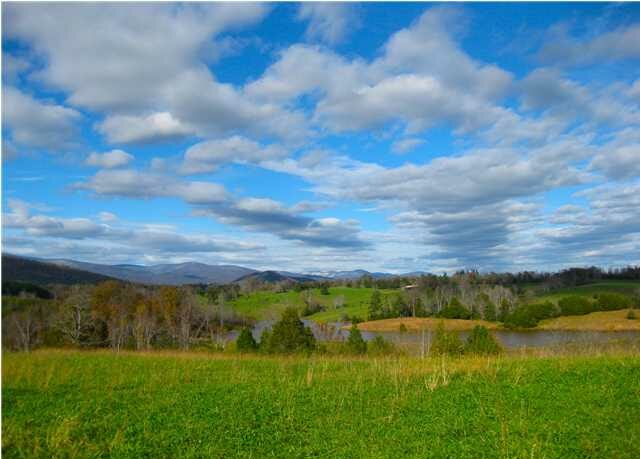With the lack of resale housing inventory in our area for the past few years, many Buyers are turning to the idea of purchasing some land and building their own home.
But, what are some of the things you may need to look out for, and the right questions to ask (known as “due diligence”), in finding the right lot?

Land can be a great investment, but it’s also a matter of knowing what to watch out for, and under what circumstances you should re-adjust your offer price (or walk away from the deal altogether).
What is the Zoning on the Property?
It is vitally important to understand what a property can be used for, and its highest and best use. With a phone call to your local planning & zoning department, most offices can give you the answer to this question in a matter of seconds.
Once you know the zoning classification (e.g. – residential, mixed-use, commercial, industrial, agricultural, etc.), ask them to give you some examples of what type of property would be allowed under each of these particular zoning classifications.
They may even give you some ideas that you hadn’t previously thought of. Once you understand the most ideal use of the property – you can quickly determine whether it will fit your needs.
What is the Topography?
In many cases, the topography of the land can have a huge impact on the build-ability of a property. For the same reasons you can’t build a house on 90-degree cliff, you should be doing some preliminary research to find out where your property is located, and what the lay of the land is.
One of the best ways to do this is by using Google Earth and the topography map from Earth Point. With Google Earth, you can search for your property (using the address or coordinates) and zoom in using your mouse buttons and the control/command and shift keys on your keyboard. This will allow you to tilt the earth so you can see precisely where all the hills and valleys are in your area.
Local tax maps also include topography and parcel lines info.
What is the Annual Tax Obligation?
If you intend to hold onto a property for any length of time, beware of a high tax bill relative to the actual value of the property itself – for example, if a $10,000 property has an annual tax bill of $2,000, that is too high. A reasonable annual tax bill usually falls in the range of 1% – 4% of the property’s full market value.
What Public Utilities are Available? (Water, Sewer, Electric, Gas, Phone)
If a property doesn’t have access to one or more of these staples, it may not be considered build-able. After all, who would want to build a house where they can’t flush the toilet or get access to clean water?
If a property isn’t build-able, you will lose a massive portion of the property’s usability, marketability and value. Since most people buy land with the intent of building on it, you will definitely want to be aware of anything that could become an obstacle to that objective.
What are the Required Building Setbacks?
First, you need to understand the exact dimensions of the parcel of land you are evaluating. Next, call the local zoning department and ask them what the designated building setbacks are for the property in question (building setback requirements are very common, and are imposed as a way of giving order and consistency to the buildings in any given area).
When you take these setbacks and regulations into account (relative to the size of this parcel of land), is there still enough room to build something worthwhile – or does it render the property useless?
Does the Property Have Any Usage Restrictions?
Most of the vacant land you’ll encounter will have some kind of zoning requirements and/or usage restrictions in place.
Every municipality in America has a plan for how they want different sections of their land to be used, regardless of who owns it. As such, you should always expect your property to come with some reasonable limitations on what it can be used for.
If the property is part of a Home Owner’s Association (HOA) it will most likely have even more stringent restrictions in place to help maintain the “quality” and formality of their neighborhood.
Usage restrictions aren’t necessarily a bad thing – they almost always make sense on some level. They’re designed to help maintain order and support the value of each property in the subdivision.
If you aren’t aware of these restrictions before you purchase, they can also create some conflict with the plans you had in mind for the property. You should always make sure you understand what the rules are BEFORE you buy a parcel of vacant land. This will help you avoid owning a property that requires maintenance you don’t want to do, or that can’t be used for your intended purpose.
Is the Property Located in a Flood Zone?
In some parts of the country, parcels of land are vacant because they are literally under water. In other areas, there may be properties near bodies of water that are prone to flooding.
In either case, if a property is at risk of flooding – you’ll want to know about this BEFORE you buy because when a property is in a flood zone, it can be extremely expensive to insure.
Land located near a body of water can be extremely valuable, but this close proximity can also create a number of potential issues, so be sure you understand the ramifications of your particular location.
One quick way to verify is to check the FEMA flood maps in your area. You can do this by visiting FEMA.gov and following the instructions. You can also try FloodTools.com for another user-friendly way to find the same information.
Does the Soil Percolate (aka – “Perk”) or have Access to a Nearby Sewer System?
If you’re planning to build a “dwelling” of any kind on your parcel of land, there is one issue that may seem insignificant at first glance, but it has the potential to make or break a land deal.
A Perc Test (also known as “Perk Test”, and more formally known as a “Percolation Test“), is a soil evaluation that tests the rate at which water drains through the soil. If a property doesn’t have easy access to the local sewer system, a perc test is required to determine whether a septic system (the alternative to a sewer) can be installed on the property.
If a property doesn’t pass this test, you could have a very difficult time building any type of dwelling on the property, so unless you’re able to tap into the municipal sewer system (which will negate this issue altogether), be sure to give the county health department a call and ask them what is required to install a septic system (or connect to the local sewer) in your area. For a detailed overview of how a perc test works and how to verify the status of this issue, check out this blog post.
Is the Property Landlocked?
There are thousands of properties all over the country that have no road access. They are surrounded on all sides by other private property – which deems the land virtually useless, because nobody can legally access the property.
This issue can be overcome if you can establish a legal, recorded easement to the property. This can be done if one of the neighbors is willing to allow you access through their property – to yours.
In many cases, a neighbor shouldn’t be expected to do this for free, you’ll have to give them a reason to help you (usually in the form of money). Again, this isn’t an impossible issue to overcome, but it is definitely something you’ll want to be aware of before you purchase.
What is the Size and Shape of the Parcel?
If you see a parcel of land with an odd shape, use your common sense. If you can’t think of a legitimate use for a property with its given dimensions – you’ll probably want to think twice before buying it.
Does the Property Have Access to a Municipal Water Supply?
There are a lot of properties that don’t have access to a municipal water supply (i.e. – city or community water). This isn’t necessarily a problem, but it does mean you’ll have to drill a well in order to access a clean water source beneath the surface.
There are a few ways to determine whether or not you’ll be able to do this but in most cases, if there are other buildings in the near vicinity (e.g. – homes or other dwellings built next door), this is usually a good indication that you won’t have any problems accessing water either.
If you’re looking at a vacant lot in the middle of the desert or near the top of a mountain with nothing around for miles, you will probably want to verify with a professional that water will be accessible if/when you need it (and if your only option is to have it hauled in by truck, you’ll want to get an idea for how much this will cost on an ongoing basis).
Is it a makeshift landfill?
If you’re going to buy a piece of land, make sure that all you’re getting is LAND.
Makeshift landfills, for example, can be very expensive to clean up, and as a way to avoid any unwanted surprises on this front, it’s always a good idea to actually see the property you’re purchasing.
If you’re purchasing the property from a long distance and it simply isn’t feasible to see the property yourself, find a local set of eyes to find the property and get some pictures for you.
Most agents are regularly in the field anyway, and it isn’t a huge ask for them to swing by your property and get some pictures.
What Were the Previous Uses of the Property?
Most states have environmental laws that pertain to commercially zoned property. If you’re considering a vacant lot zoned for commercial development, make sure you’re not inheriting any environmental contamination with the property.
For most commercial properties, the best way to do this is by ordering a “Phase I Environmental Report” (many banks will automatically require this because it affects their collateral). This report will identify if there are any “Recognized Environmental Concerns” (RECs) on the property that you need to worry about.
If you neglect to do any environmental due diligence, the liability for any existing environmental contamination on the property could ultimately fall on your shoulders – making it very difficult and expensive to sell the property in the future.
What Do the Surrounding Properties Look Like?
The properties next door can affect the value and “sale-ability” of a parcel of land. For understandable reasons, most people care a great deal about who and what they live next to, so be sure to get a good idea for what the surrounding properties look like.
Is this a desirable area? Is it the type of place where you would want to live? If the surrounding properties have any obvious issues that are beyond your control, you’ll want to think very carefully about what this means for the property’s value and whether or not you want to own it.

